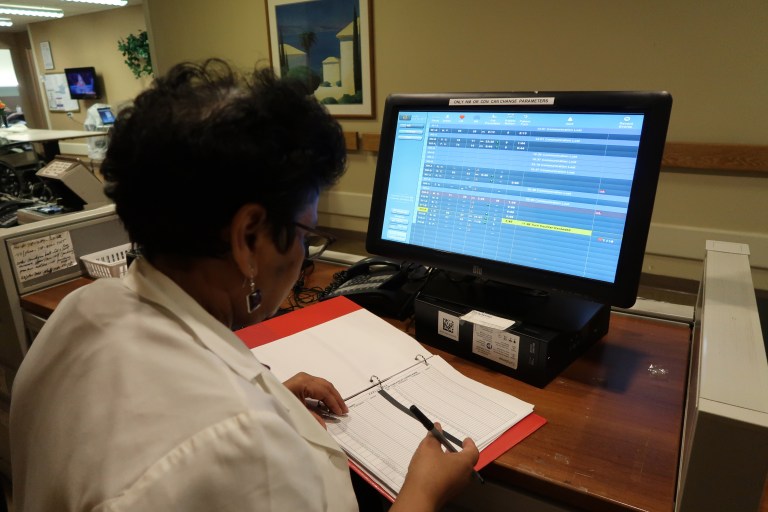
Parker Jewish Institute for Health Care and Rehabilitation recently acquired state-of-the-art monitoring technology, designed to increase patient safety, reduce falls, bed sores/pressure ulcers, enhance quality of care and patient outcomes.
Parker’s new partner, EarlySense, offers a patient safety solution providing clinical personnel with the tools to continuously monitor two of the most critical predictors of patient adverse events – heart rate and respiratory rate – allowing clinicians more opportunities for early intervention.
Parker’s new technology offers continuous and contact-free monitoring of a patient’s heart and respiratory rates, as well as patient motion, thus enabling clinicians to intervene promptly by providing: early detection displays of vital sign trends and alerts when heart and respiratory rates are out of range (predictors of a potential deteriorating condition); fall prevention, with six levels of bed exiting sensitivity tailored for each patient, thus enabling nurses to be at the bedside before a resident has exited his or her bed; turning and positioning alerts, utilizing patient-specific repositioning frequency settings, as well as resident turn verification alerts.
The equipment entails a sensor placed under the resident’s mattress, which is connected to a discrete processing unit behind the bed. Sensors send signals to this unit, providing continuous contact-free and alarm-free monitoring for patients.
Assigned licensed nurses and certified nursing assistants on the unit, in addition to nursing supervisors and medical attending, wear pagers that alert them when patients’ heart and respiratory rates are sensed to be out of desired ranges as determined by the attending physician, and when a patient attempts to exit a bed or needs to be turned or repositioned. When a patient’s alert is triggered and sensed, the system also alerts nurses on I-Pad devices and on a large central display station which shows:
● Real time status displays of up to 26 patients.
● Visual and audio identification of potential critical events.
● A variety of patient management reports including nurse
shift report and patient status report.
● Resident’s continuous measurements and trends display. Staff from EarlySense came on-site for a technology and clinical needs assessment during this past summer to make ready for the September launch.
During the week of Sept. 25, EarlySense personnel were on-site to train CNAs, RNs, LPNs, physicians and other staff, and to install the new system. Actual go-live date was Sept. 28, but for now, this is still a pilot program and was only implemented in Parker’s Three North West Wing (rooms 301 – 313).
EarlySense remained on-site for a couple of days after the go-live date, to support Parker’s staff while they learned the new system and be available as needed.
“The goal in securing EasySense technology is to enhance quality of care by better patient monitoring so that early intervention can take place. Early detection of patient deterioration in clinical care units is a top priority for all health care institutions, including skilled nursing facilities like Parker,” said Michael N. Rosenblut, Parker’s president and CEO.
He explained that continuous monitoring is key in recognizing and quickly responding to early warning signs, which should enhance quality of care, plus reduce length of stay and costs.
“Our ultimate objective is to reduce our hospital re-admissions,” Rosenblut added.
Since Parker implemented this project in September, early feedbacks from clinical staff indicate the technology is resulting in increased nursing assessments and intervention with the clinical teams.
“Overall, it’s like a pair of extra eyes and ears for our staff,” said Colleen Ariola, Parker’s vice president of patient care services. “EarlySense is driving care to the bedside, enabling nurses and physicians to check-in on, and assess residents as alerted.
“The system even requires clinicians to turn off alarms only at the bedside while with patients; this is the opportunity they need to look for changes in the patient’s condition. The system also facilitated a reduction in noisy bed alarms, which can annoy patients, adding quality of life to their day,” she added.
Ariola said the system is also helping nurses be more clinically effective, enabling Parker to provide the best care to their population of fragile, older adults.
EarlySense also limits staff alarm fatigue, since it results in a lower alarm rate when compared with other systems. Continuous monitoring and accurate alarms helps staff prioritize their workload and manage time better, to provide appropriate patient care when needed.
The end result is a reduction in pressure on staff.






